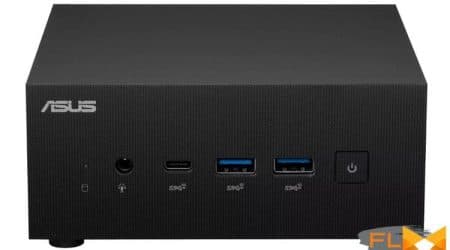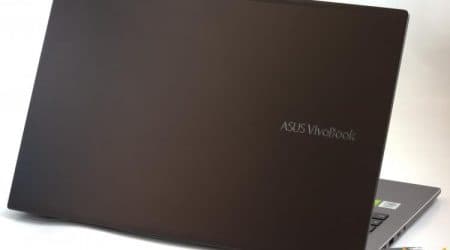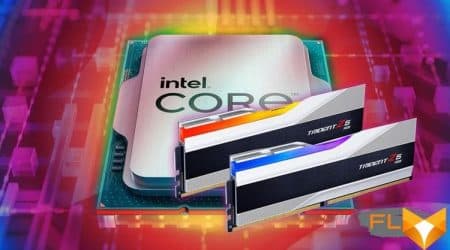As the world embraces innovation, the realm of three-dimensional creation continues to evolve at an astonishing pace. Enthusiasts and professionals alike search for tools that not only simplify the process but also enhance the quality of their results. Today, we delve into a cutting-edge device that promises to transform your experience in this captivating field.
With advancements in technology, the accessibility of high-performance machinery has skyrocketed. This accessibility opens up new avenues for creativity, enabling users to bring their boldest visions to life with ease. In this exploration, we will uncover the features and capabilities of a remarkable model designed for both novices and seasoned experts.
Join us on this journey as we dissect the essential attributes of this innovative apparatus. By understanding its strengths and functionalities, you will be better equipped to harness its potential for your creative projects. Prepare to embark on a thrilling adventure into the world of advanced fabrication.
Bambu Lab A1 Overview
This section provides an insightful look into the remarkable features and capabilities of the A1 model, designed to elevate the experience for enthusiasts and professionals alike. Through innovative engineering and user-friendly interfaces, this device aims to meet a wide range of demands in the realm of additive technology.
Key Features
The A1 boasts a compact yet robust design, making it suitable for various environments. Its seamless integration of advanced technology ensures high precision in the creation of intricate models. Additionally, the device offers a range of compatibility with diverse materials, allowing users to explore their creative potential without limitations.
User Experience
The intuitive controls and well-thought-out software interface enhance the overall usability for both beginners and seasoned users. Coupled with reliable performance and minimal maintenance requirements, the A1 stands out as a powerful tool for anyone looking to delve into creative projects or professional applications within this innovative domain.
Key Features and Specifications
This section highlights the essential characteristics and technical details that define the capabilities of the 3D creation device. Understanding these elements provides users with insight into its performance, usability, and adaptability for various projects.
Core Characteristics
- Build Volume: The dimensions of the printing area directly impact the size of the objects that can be fabricated.
- Layer Height: This measurement determines the resolution and detail achievable in the final product.
- Filament Compatibility: The variety of materials that can be used enhances creative possibilities and applications.
- Speed: The rate at which objects are printed affects efficiency, especially for larger projects.
Technical Details
- Print Head Type: The design and functionality of the print head can influence extrusion precision.
- Connectivity Options: Available interfaces for data transfer ensure flexibility in usage, such as USB, Wi-Fi, or SD card support.
- User Interface: A well-designed control panel or touchscreen can significantly improve the user experience and ease of operation.
- Temperature Control: Effective management of heating elements is crucial for material extrusion consistency.
Setting Up Your 3D Printer
Establishing a new additive manufacturing device can be both exciting and daunting. The initial configuration is crucial to ensure optimal performance and to achieve high-quality results with your models. This section will provide an overview of essential steps to prepare your machine for use.
Essential Components
Before diving into the setup process, it’s vital to familiarize yourself with the key elements of the device. Typically, these include:
- Extruder assembly
- Build plate
- Filament spool holder
- Power supply unit
- Control panel or display screen
Step-by-Step Configuration
Once you have gathered all necessary components, follow these steps to ensure proper installation:
- Start by placing the device on a stable, level surface, ideally in a well-ventilated area.
- Assemble the extruder according to the manufacturer’s specifications, ensuring it is securely attached.
- Position the build plate, making sure it is aligned correctly for effective adhesion of your materials.
- Connect the power supply, ensuring all cables are safely routed and secured. Check for any exposed wiring.
- Power on the device and navigate through the initial setup menu on the display screen.
- Load the filament carefully into the extruder, following the guidelines to avoid jams.
- Calibrate the bed level to establish the correct distance between the nozzle and the surface for optimal extrusion.
- Run a test print to verify that everything is functioning as expected and make adjustments as needed.
By carefully following these steps, you will lay the foundation for a fruitful experience with your additive manufacturing equipment, paving the way for creative and innovative projects ahead.
Best Practices for Filament Selection
Selecting the right material is crucial for achieving optimal results in three-dimensional fabrication. The choice of filament can have a significant impact on the overall quality, durability, and aesthetics of the final product. Understanding the various factors that influence material selection is essential for enhancing your projects.
Here are some best practices to consider when choosing filament:
- Understand Your Project Requirements:
- Consider the purpose of the item being created.
- Assess the need for flexibility, strength, or durability.
- Evaluate the environmental conditions the print will be exposed to.
- Research Material Properties:
- Familiarize yourself with common filaments such as PLA, ABS, PETG, and nylon.
- Look into specific characteristics like temperature resistance, ease of use, and post-processing capabilities.
- Consider Compatibility:
- Check if the filament is compatible with your printer model.
- Ensure that the nozzle size and temperature settings align with the filament specifications.
- Quality Matters:
- Choose high-quality filaments from reputable manufacturers to avoid issues during the fabrication process.
- Avoid cheap, low-grade materials that may lead to clogs and poor adhesion.
- Experiment and Document:
- Keep track of which materials work best for specific applications.
- Experiment with different brands and types to find the optimal fit for your needs.
By following these guidelines, you can make informed decisions about filament selection, leading to improved outcomes in your creative endeavors. The right material is key to transforming your ideas into tangible results.
Troubleshooting Common Issues
Identifying and addressing typical problems is essential for anyone looking to enhance their experience with additive manufacturing technologies. By understanding common pitfalls and their solutions, users can ensure smoother operation and better output quality, reducing frustration and minimizing downtime.
Frequent Challenges and Resolutions
| Issue | Possible Causes | Solutions |
|---|---|---|
| Layer Adhesion Problems | Incorrect temperature, insufficient speed | Adjust nozzle heat, optimize movement speed |
| Stringing | Retraction settings, material type | Modify retraction distance, change filament |
| Warping | Poor bed adhesion, uneven heating | Use adhesive solutions, level build surface |
| Under-extrusion | Nozzle blockage, filament issues | Clear nozzle, ensure filament quality |
Practical Tips for Prevention
To minimize the occurrence of these typical issues, consistency in maintenance is crucial. Regularly check and calibrate equipment, utilize quality materials, and keep an eye on environmental factors like humidity and temperature. Implementing preventive measures can lead to a more enjoyable and effective journey in the realm of 3D manufacturing.
Enhancing Prints with Slicing Software
Optimizing creations often starts with the right preparations, and the choice of software plays a critical role in this process. Effective software solutions ensure that models are translated into physical objects with precision, enhancing both quality and fidelity. By taking advantage of the features offered by slicing tools, users can elevate their final results significantly.
Key Features to Consider
- Layer Height: Adjusting layer thickness can influence the surface smoothness and printing speed.
- Infill Density: Determines the internal structure and strength; varying it can impact material usage.
- Support Structures: Essential for complex geometries; choosing the right type can save time and reduce material waste.
- Print Speed: Balancing speed with quality is crucial; fine-tuning this setting can lead to better outcomes.
- Temperature Settings: Tailoring the extrusion and bed temperature to the material enhances adhesion and reduces warping.
Best Practices for Optimal Results
- Always start with a clean and well-calibrated printer to ensure accuracy.
- Export models in the correct format to avoid compatibility issues.
- Experiment with different settings in small test prints before committing to larger projects.
- Utilize preview functions in software to visualize layer transitions and identify potential problems.
- Regularly update slicing software to access new features and improve performance.
By effectively utilizing the capabilities of slicing software, individuals can achieve remarkable advancements in their projects, leading to refined and highly detailed outcomes that meet or exceed expectations.
Questions and answers: Bambu lab a1 mini
What makes the Bambu Lab A1 Mini Combo an ideal 3D printer for beginners?
The Bambu Lab A1 Mini Combo is an ideal 3D printer for beginners due to its fully automated calibration processes, including auto bed-leveling and auto belt tension. This printer is designed to simplify the 3D printing experience, featuring a user-friendly interface in Bambu Studio and pre-tuned precision for consistent print quality. The A1 Mini handles various calibrations such as vibration frequency calibration and nozzle pressure adjustments, making it easy to start printing high-quality models right out of the box.
How does the AMS Lite system work with the Bambu Lab A1 Mini Combo?
The AMS Lite system allows the Bambu Lab A1 Mini Combo to perform multi-color 3D printing by automatically switching between different filaments during a single print. This system enables users to create vibrant, multi-color models with ease, especially when using TPU or other flexible filaments. However, it’s important to note that the AMS Lite is incompatible with certain other Bambu Lab models like the X1 or P1 series, making it specific to the A1 series for multi-color printing.
What features ensure high-quality print results with the Bambu Lab A1 Mini Combo 3D printer?
The Bambu Lab A1 Mini Combo ensures high-quality print results with several advanced features, including auto vibration calibration, a high flow rate for faster printing, and a nozzle pressure sensor for precision. The printer’s rigid frame and full-metal rails contribute to smooth motion and stability during printing. Additionally, the bed-slinger design with a 256mm print area and auto belt tension adjustments guarantees consistent results, even during long print jobs. These features make the A1 Mini Combo a reliable entry-level printer for hobbyists and professionals alike.
How does the Bambu Handy app enhance the experience of using the A1 Mini Combo 3D printer?
The Bambu Handy app enhances the A1 Mini Combo 3D printing experience by offering remote control features, allowing users to monitor and manage their prints from anywhere. The app works seamlessly with the Bambu Lab A1 Mini Combo, providing live updates on the print progress, print bed status, and filament usage. This remote control functionality is especially useful when printing large models like Benchy or when running multi-color 3D printing jobs with the AMS Lite system, ensuring users can track their first print and every print thereafter with ease.
How does the Bambu Lab P1S handle the Z-offset adjustment during 3D printing?
The Bambu Lab P1S uses an automated bed-leveling system to adjust the Z-offset, ensuring the toolhead is properly calibrated for the first layer of every print. This feature is pre-tuned with precision, allowing the printer to automatically detect any misalignment and adjust the Z-offset accordingly. This ensures consistent quality, especially when printing complex 3D models or using different types of support filament.
What are the advantages of using the AMS Lite system with the Bambu A1 Mini?
The AMS Lite system works seamlessly with the Bambu A1 Mini, allowing users to achieve multi-color 3D prints by automatically switching between filaments during printing. This feature enhances the versatility of the A1 Mini’s prints, especially when users want a multi-color print using flexible or specialty filaments. However, it’s important to note that the AMS Lite is incompatible with Bambu Lab’s other models like the X1 or P1S, making it specific to the A1 Mini.
How does the Bambu A1 Mini ensure high precision when printing, especially for beginners?
The Bambu A1 Mini comes pre-tuned with precision, meaning that features like bed-leveling and belt tension are already optimized, making it easy for beginners to start printing without needing manual adjustments. It also utilizes a high-resolution toolhead and pressure advanced technology, ensuring smooth extrusion during printing. This combination of features ensures that the A1 Mini delivers high-quality prints with minimal setup effort, making it a great choice for first-time 3D printing users.
What considerations should users have regarding motor noise and enclosure requirements when using the Bambu Lab P1S?
The Bambu Lab P1S operates with low motor noise, making it suitable for home or office environments without requiring an enclosure to dampen sound. However, users printing materials like ABS or other high-temperature filaments may require an enclosure for temperature stability. The P1S is designed to provide high-speed and quality prints while maintaining a quiet operation, making it a popular choice for those looking for an FDM 3D printer that balances performance with noise management.



